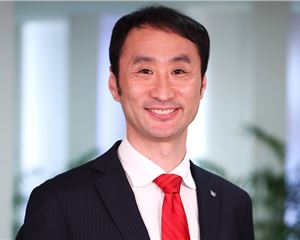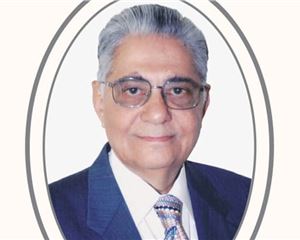X-Rite opens Brand Experience Centre in Gurugram
The new facility, in Gurugram, Haryana, is designed to serve as a regional base for training, live demonstrations, and customer collaboration for printers and packaging companies
21 Nov 2025 | By Treya Sinha
X-Rite has opened its first-ever Brand Experience Centre, choosing India as the location for what the company describes as a key step in its global expansion strategy.
Jeff McKee, global president of X-Rite, said the decision to locate the centre in India was deliberate. “We knew we wanted to target India for our first Brand Experience Centre because it is a high-growth market with an exciting future,” he told PrintWeek. “This centre allows us to support, educate, and partner with our customers more closely than ever before.”
The Gurugram centre has been planned as a multi-functional space rather than a conventional showroom. X-Rite intends it to operate as a hub where brand owners, printers, and converters can examine digital colour workflows from proofing to production.
The facility
The facility is organised into three main sections — a collaboration zone, a training classroom, and a colour laboratory. Each space is meant to connect theory, practice, and technical support under one roof.
The collaboration area includes a large table equipped with adjustable lighting between 5,000K and 7,000K, enabling users to evaluate colour differences under multiple illumination conditions. This zone will also feature an interactive touchscreen display carrying product information and digital learning modules. Seating areas are arranged for smaller meetings where visiting teams can compare samples or discuss workflow issues.
“The idea is to make this a working environment, not a display room,” McKee said. “Customers can bring their own samples, see how materials behave under different light sources, and discuss solutions with our specialists.”
Adjacent to the collaboration area is a classroom section that can seat up to 50 participants. The company plans to hold industry-specific training programmes covering fundamentals of colour science, calibration, and digital workflow integration. The courses will also include sessions on sustainability and efficient material use.
McKee said the training model will combine open sessions with advanced paid workshops. “In the past we’ve offered both free and paid programmes,” he noted. “General sessions help raise understanding of colour management across the market, while the technical modules go deeper into process control and automation.”
The company expects to conduct separate courses for the textile, packaging, and graphic-arts segments. Partner firms may also use the space to run joint training on related technologies.
The third section of the facility is a fully equipped colour laboratory. The lab is intended to bridge classroom learning and field application by allowing customers to test, measure, and analyse samples on site.
Visitors will be able to request colour assessment reports, observe live demonstrations, and learn best practices for calibration and quality control. The lab will be staffed by a dedicated manager and equipped with X-Rite’s full portfolio of instruments, including spectrophotometers, digital proofers, conditioning chambers, and winding machines along with selected partner devices for comparative testing.
“The lab will give customers a chance to see how automation can be integrated directly into their own production,” McKee said. “We can show the connection between data, devices, and workflow results.”
McKee emphasised that X-Rite’s current strategy links colour accuracy with resource efficiency. “We help our customers become sustainable by helping them achieve colour faster and more consistently,” he explained. “That reduces scrap — whether it’s cotton, ink, paper, or dye and saves natural resources.”
Automation, he added, plays a central role in this goal. “Average press runs have dropped by roughly 50% in the last five years,” McKee said. “Printers are now doing shorter runs with more changeovers. Our automation tools are aimed at improving changeover time, yield, and uptime — all of which are critical for profitability.”
The company also sees potential in helping converters manage colour consistency on recycled and mixed-material substrates, which are becoming more common in packaging and textiles. “Our technology can help maintain colour accuracy on varying materials,” McKee said. “That flexibility is essential as sustainability requirements increase.”
During the launch week, McKee and the X-Rite leadership team visited certain customers across commercial print and packaging operations. He said the visits confirmed both the sophistication and the unrealised potential of the Indian market.
“Most converters now own advanced devices like spectrophotometers and densitometers,” McKee said, “but many use only a portion of their capability. Our goal is to help customers extract full value from their investment by showing how to calibrate presses, digitise workflows, and automate routine tasks.”
.jpg) Team X-Rite during the opening of the Centre
Team X-Rite during the opening of the Centre
The first site
He noted that the Gurugram centre will act as a reference site where printers can benchmark colour performance and learn how consistent measurement improves communication between brand, pre-press, and production teams.
The new facility is not only X-Rite’s first in India but also the first Brand Experience Centre worldwide. Until now, the company’s physical presence in the country was limited to a Bangalore office and service unit.
“This is our first experience centre anywhere in the world,” McKee said. “It’s not just about serving India; it’s a model for how we want to engage high-growth markets globally.”
By establishing the pilot centre in Gurugram, X-Rite intends to test a format that can later be replicated in other regions. The company sees the Asia-Pacific market as essential to its future business, given the region’s expanding base of print and packaging manufacturers.
Although the Gurugram centre has opened, the installation of all equipment will continue over the next few weeks. Once fully operational, it will host scheduled demonstrations and workshops for consumer packaged goods, textile, graphic-arts, and display segments.
The company also plans to introduce certification programmes and technical consulting sessions once the facility stabilises operations. “We want customers to be able to test, learn, and apply knowledge here, and then replicate those processes in their own plants,” McKee said. “As the market grows and matures, we hope the experience centre becomes part of that maturity,” he said. “It should help accelerate growth across the region by improving confidence, competence, and consistency in colour management.”
The centre will be open to professionals from across the print and packaging value chain. By offering access to equipment, training, and live workflow demonstrations, X-Rite expects it to play a role in building a more colour-literate and sustainability-driven print industry in India.
With India selected as the site of its first Brand Experience Centre, X-Rite has made a clear statement about where it sees the future of colour management — in the heart of one of the world’s fastest-developing printing markets.
.jpg)












 See All
See All